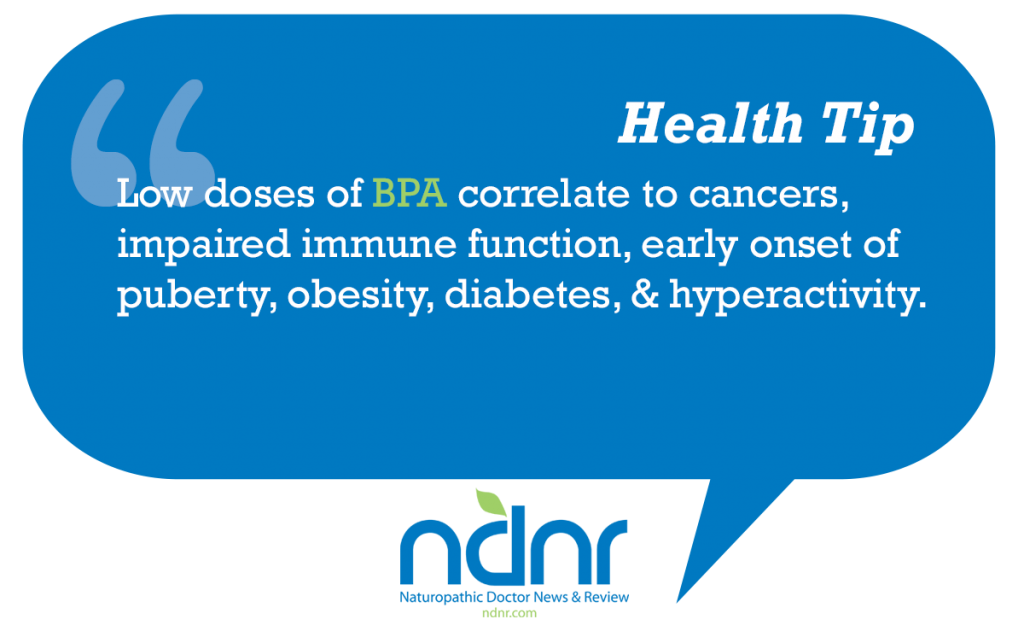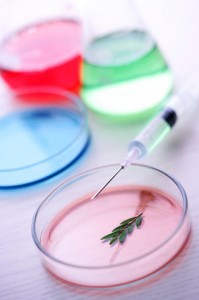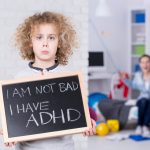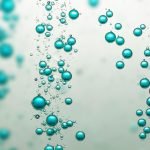How Toxic Chemicals in Personal Care Products Can Cause Harm
Anne Marie Fine, NMD and Sara Rodgers, NMD, MS
Naturopathic physicians are experts in helping people decide what to put in the body; we are also well-positioned to provide expert advice on what to put on the body. Personal care products represent the largest class of avoidable exposures to toxic ingredients and yet have not received the attention accorded to carcinogenic and toxic pollutants in air, water, home, and workplace. Unlike these toxins, however, we can exercise control over what we put on our skin. Cosmetics and personal care products are not only the single most avoidable category of threats to our health, but they also have the widest range of alternative, safe products.
The Food and Drug Administration (FDA) has no requirement for testing or approval before these products are marketed. There are also no mandates for label warnings identifying known allergens, carcinogens, or endocrine disruptors. This industry is self-regulated. While the European Union (EU) has adopted the Precautionary Principle in addressing potentially toxic chemicals in personal care products before release, the United States looks for irrefutable proof of harm before recalling toxic ingredients.
Every day, at least 3 personal care products are applied to the skin of infants and children. Women use 6 or more cosmetics and an average of 13 personal care products daily, containing more than 100 different ingredients. Men use an average of 10 personal care products per day. We are exposed constantly to potentially problematic chemicals.
This paper provides an overview of overt and hidden carcinogens, endocrine disruptors, and skin allergens commonly found in personal care products.
Bisphenol A
Bisphenol A (BPA) is an example of the difficulty and controversy of assessing environmental health hazards. Edward Charles Dodds, a British medical researcher at the University of London, identified the estrogenic properties of BPA in the mid-1930s while researching synthetic estrogen. He found the estrogenic properties of BPA rather weak and continued his search until he found a more powerful estrogenic substance, diethylstilbestrol (DES), which he subsequently brought to market. Given its origins, it is unsurprising that BPA has been found to be an endocrine disruptor that is linked to cancer.
Bisphenol A was dropped as a drug but had a good career in plastics. It is considered a high throughput chemical, with commercial applications in epoxy resin and liners for metal equipment, piping, steel drums, and the interior of food cans, as well as adhesives for laying flooring and sealing teeth. In the 1950s, it was made into polycarbonate material used in electronics, safety equipment, automobiles, plastic food containers, and plastic water bottles. It is also found in children’s toys, sippy cups, infant formula (leaching from the can lining), baby bottles, IV tubing, canned foods including sodas, the glossy coating on sales register receipts, and in some prescription medications (as a coating). Over six billion pounds of BPA are produced yearly.
Bisphenol A has also contaminated human tissue. The NHANES III study demonstrates widespread human exposure to BPA in 93% of urine samples from humans 6 years and older. The same study revealed that infants (0-6 months) fed formula from plastic bottles had up to 10 times the amount of BPA in their urine than breast-fed infants.1 This is significant because even breast-fed infants had BPA in their urine, likely from their mother’s breast milk.
Bisphenol A has been found in breast milk, amniotic fluid, cord blood, serum, and saliva. The Endocrine Society, a professional scientific organization devoted to hormone research, warns that BPA and other endocrine disrupting chemicals “have effects on male and female reproduction, breast development and cancer, prostate cancer, neuroendocrinology, thyroid, metabolism and obesity, and cardiovascular endocrinology.”2
Low doses of BPA correlate to cancers, impaired immune function, early onset of puberty, obesity, diabetes, and hyperactivity. The median level of BPA in humans exceeds the level proven to cause damage in animal studies.3 Bisphenol A is associated with oxidative stress and inflammation in postmenopausal women.4
Hydroquinone
Hydroquinone, the active ingredient in skin lighteners, inhibits tyrosinase, the enzyme necessary for melanin production. Environmental Protection Agency researchers have discovered that hydroquinone may cause skin tumors on mice exposed dermally, according to their Health and Environmental Effects Document for p-Hydroquinone.The US National Toxicology Program has identified carcinogenic activity in rats and female mice exposed to hydroquinone.5 Hydroquinone has also been found to be mutagenic in vitro and in vivo in rats.
6 An in vitro study of the population from India demonstrated that participants with GSTM1 (null), GSTT1 (null), and GSTP1 (val/val) are more sensitive to hydroquinone genotoxicity.7
The 1999 IARC evaluation of hydroquinone’s carcinogenic risk to humans determined it was not classifiable based on available evidence. Other researchers suspect possible long-term effects such as carcinogenesis, including aplastic anemia, and acute myeloid leukemia.8 Most of the evidence for these suspicions stems from research on benzene toxicity, which appears to arise via its metabolite, hydroquinone.
In January 2001, the EU banned the use of hydroquinone in over-the-counter cosmetics, limiting it to prescription products under medical supervision. It is limited to 2% in OTC products and 4% in medically supervised prescription formulations in the United States.
Hydroquinone also causes contact dermatitis, irritation, and exogenous ochronosis.9 One dermatologist in New York City stated that he used to see exogenous ochronosis rarely but now sees about 1 case per month.
Phthalates
Phthalates are lipophilic compounds present in a wide range of consumer products, such as polyvinyl chloride flooring, shower curtains, detergents, plastic clothing, pharmaceuticals, IV bags and tubing, children’s toys, and personal care products. Phthalates also occur in our diet, owing to leaching into our food via plastic packaging including water bottles.
The Environmental Working Group found phthalates in 75% of 72 personal care products, such as nail polish and moisturizers, tested.10 One hundred percent of fragrances tested positive for phthalates. None of the products containing phthalates included it on the label. Fragrance is protected as a trade secret and is not required to be listed on the label. In the United States, “fragrance” is simply a trade name for between 100 and 300 different scent chemicals.
The EU bans carcinogenic and mutagenic chemicals and reproductive toxins from cosmetic products. The phthalates benzyl butyl phthalate, dibutyl phthalate, and diethylhexyl phthalate were banned in 2003, owing to their classification as toxic to reproduction. Despite this regulation, cosmetic companies often use these chemicals in markets that do not prohibit them, including the United States.
Scientists have found a significant association between mothers with highly phthalate-contaminated breast milk having sons with decreased reproductive hormone levels.11 This corroborates other recent data showing incomplete virilization in infant boys prenatally exposed to phthalates. The term phthalate syndrome was coined to cover a range of male abnormalities, including cryptorchidism, hypospadias, decrease in anogenital distance, low sperm counts, fertility problems, and testicular cancer and atrophy.12 In adult men, phthalates are associated with reduced steroid hormone levels.13
When tested, young girls in Puerto Rico had one of the highest levels of thelarche in the world.14 Significantly, high levels of phthalates were identified in 68% of the thelarche patients. Only 1 of the controls in this study showed significant levels of phthalates.
Parabens
Parabens have been shown to be estrogenic in vivo and in vitro and have been detected in human breast tumor tissue, cord blood, and breast milk.15,16 Studies have demonstrated the ability of parabens to penetrate human skin, to possess androgen antagonist activity, to inhibit sulfotransferase enzymes, and to possess genotoxic activity.17 Parabens are nearly ubiquitous in personal care products such as deodorant, shampoo, conditioner, and moisturizers, although paraben-free alternatives exist.
Hidden Toxins and Allergens
The lack of total disclosure on product labels is an insidious component of the personal care product issue. It is important to know which compounds are designed to release formaldehyde, are contaminated by carcinogens, or combine with other ingredients to form carcinogens.
Formaldehyde Releasers
Formaldehyde releasers preserve products by slowly releasing formaldehyde. They are usually paired with parabens for antifungal protection. The health concerns with formaldehyde releasers include direct toxic effects and contact dermatitis for many users.18 Twenty percent of all cosmetic products, including 17% of stay-on products and 27% of wash-off products, contain formaldehyde releasers.19 These ingredients include quaternium-15; dimethyl-dimethyl hydantoin; imidazolidinyl urea; diazolidinyl urea; 2-bromo-2-nitropropane-1,3-diol; and sodium hydroxymethylglycinate.
1,4-dioxane
1,4-dioxane is a by-product of the ethoxylation process in which ethylene oxide is added to compounds to make them less harsh. 1,4-dioxane easily penetrates the skin, and animal studies show nasal and liver cancers with lifetime exposure.20 The finished ethoxylated ingredients are usually those that help to make suds, such as sodium laureth sulfate, polyethylene, polyethylene glycol, polyoxyethylene, polysorbate, or any ingredient with “xynol,” “ceteareth,” or “oleth.” It is interesting to note that many of these ingredients are common in over-the-counter supplements. Because 1,4-dioxane is not the finished ingredient, it will not be listed on the label, but its contamination is guaranteed unless the manufactures vacuum strip the finished ingredient. Some ethylene oxide, a known breast cancer carcinogen, also may reside in the finished product.
Nitrosamines
Nitrosamines, such as N-nitrosodimethylamine, are known carcinogens and form when amino acids, such as diethanolamine and triethanolamine, combine with nitrosating agents. Nitrosating agents include 2-bromo-2-nitropropane-1,3-diol; 5-bromo-5-nitro-1,3-dioxane tris(hydroxymethyl)nitro-methane; or the contaminant sodium nitrate.21 Nitrosamines may form during product manufacture or while the product is on the shelf. There is also some evidence that the levels of nitrosamines may increase after a product is opened. The Environmental Working Group estimates that 1 in 10 personal care products contain ingredients with the potential to form nitrosamines. Unfortunately, toxicity does not stop there, as there is evidence that ingredients such as those found in shampoo may combine with waste water treatment chemicals and form nitrosamines, which are then released into the environment.22,23
Fragrance
Fragrance may epitomize the cosmetic industry’s regulatory and labeling issues for the uninformed consumer. The term is designed to conjure romantic images, but what does anyone really know about a specific fragrance? Fragrance is considered a proprietary ingredient, is exempt from labeling requirements, and although labeled as 1 item, may contain numerous compounds. Even the term scent free may imply the use of fragrance to cover up an inherent odor. In 2007, the American Contact Dermatitis Society named “fragrance” the Allergen of the Year. More recently, the Campaign for Safe Cosmetics and the Environmental Working Group24 examined 17 name brand fragrances for semivolatile organic compounds, volatile organic compounds, and synthetic musk. The study revealed 38 undisclosed chemicals, including sensitizers, endocrine disruptors (ie, diethyl phthalate, musk ketone), carcinogens, and neurotoxins. Some ingredients were found to perpetuate skin damage. Numerous ingredients were found to lack rigorous toxicity data. The irony is that fragrance is marketed as “sexy,” when in fact, its toxicity may contribute to breast cancer, early puberty, poor genital development, skin disease, and allergy.
Triclosan
Triclosan was first registered as a pesticide in 1969 but is now commonly known as an antimicrobial product found in soap, detergent, toothpaste, fabric, facial tissue, clothes, paper products, and toys. It is also used as a preservative in numerous products, such as building materials, polyethylene, polypropylene, polyurethane, and carpeting. Widespread in consumer products, it is now almost ubiquitous in human urine.25 Some studies indicate endocrine disruption, specifically targeting thyroid function.26 There is also growing concern of microbial antibiotic resistance. Currently, the Environmental Protection Agency is studying the effects of triclosan. At this time, the FDA has no evidence that triclosan is any more effective than soap and hot water to deter transference of disease.27
Lead
Lead in cosmetic products may be labeled, such as lead acetate in hair dye, or be unlabeled contaminants from poor manufacturing processes. Recent studies by the Campaign for Safe Cosmetics and the FDA found lead in numerous red lipstick products.28,29 The FDA does not consider lead in lipstick a health concern. However, given that lead is a known neurotoxin, is bioaccumlative, and has no known safe exposure level, it is wise to avoid lipsticks without labels specifically indicating they are lead-free.
Unlike the relatively known concept that vegetables and whole grains are healthy, it is hard for anyone to know if a favorite shampoo or lipstick contributes to cancer risk or the health of an unborn child. Naturopathic physicians guided by praevenire, docere, and tolle causam are natural leaders to promote awareness to patients and our communities in choosing healthful personal care and cosmetic products. Reading labels may be our greatest tool in this.
Resources:
Toxic Beauty How Cosmetics and Personal Care Products Endanger Your Health … And What You Can Do about It; by Samuel Epstein, MD
Not Just a Pretty Face: The Ugly Side of the Beauty Industry; by Stacy Malkan
2008 State of Evidence: The connection between breast cancer and the environment; Breast Cancer Fund, www.breastcancerfund.org.
Skin Deep, the Cosmetic Safety Data Base: www.cosmeticsdatabase.com. Look up specific personal care products and ingredients.
Safety Guide to Children’s Personal Care Products: www.cosmeticsdatabase.com/special/parentsguide/EWG_parentsguide.pdf. This easy-to-use guide helps you avoid toxins in your children’s products.
Campaign for Safe Cosmetics: www.safecosmetics.org. Can give you more information about individual types of dangers in cosmetics.
Nail Polish Wallet Card: www.womenandenvironment.org/Nail_Polish_walletcard.pdf. This great handout can help you choose toluene, formaldehyde, and dibutyl phthalate-free nail polish.
Ingredients to Avoid
- Parabens: Such as ethyl-, methyl-, butyl-, or propylparaben
- Hydroquinone
- Phthalates: Dibutyl phthalate (DBP) and diethyl phthalate (DEP)
- Formaldehyde Releasers: Quaternium-15, dimethyl-dimethyl (DMDM) hydantoin, imidazolidinyl urea, diazolidinyl urea, 2-bromo-2-nitropropane-1,3-diol (bronopol), sodium hydroxylmethylglycinate
- Dioxane contamination: Sodium laureth sulfate, polyethylene, polyethylene glycol (PEG), polyoxyethylene, polysorbate, or any ingredient with “xynol,” “ceteareth,” or “oleth.”
- Nitrosamine precursors: TEA, DEA, 2-bromo-2-nitropropane-1,3-diol, 5-bromo-5-nitro-1,3-dioxane tris (hydroxymethyl)nitro-methane
- Fragrance
- Triclosan
- Lead: lead acetate, lipstick unless specified lead-free
 Anne Marie Fine, NMD, graduated with high academic honors from SCNM in 2000. She also completed the postgraduate certification course in Environmental Medicine through SCNM in 2009. She has a private general practice in Scottsdale, Arizona and is the founder of Fine Natural Products, LLC, a company dedicated to providing nontoxic and highly effective skin care products.
Anne Marie Fine, NMD, graduated with high academic honors from SCNM in 2000. She also completed the postgraduate certification course in Environmental Medicine through SCNM in 2009. She has a private general practice in Scottsdale, Arizona and is the founder of Fine Natural Products, LLC, a company dedicated to providing nontoxic and highly effective skin care products.
 Sara Rodgers, NMD, MS, graduated from SCNM in 2004. A one-year residency at SCNM after graduation allowed her to pursue studies in environmental medicine. She also holds an MS in Environmental Science from Western Washington University. She applies her knowledge of environmental medicine to her general medical practice in Boise, Idaho.
Sara Rodgers, NMD, MS, graduated from SCNM in 2004. A one-year residency at SCNM after graduation allowed her to pursue studies in environmental medicine. She also holds an MS in Environmental Science from Western Washington University. She applies her knowledge of environmental medicine to her general medical practice in Boise, Idaho.
References:
- http://cehr.neihs.nih.gov/chemicals/bisphenol/BPADraftbriefVF_04_04_08/pdf.
- The Endocrine Society. Endocrine-Disrupting Chemicals. http://www.endo-society.org/journals/ScientificStatements/upload/EDC_Scientific_Statement.pdf. Accessed July 6, 2010.
- Vogel S. The politics of plastics: The making and unmaking of bisphenol A “safety”. Am J Public Health. 2009;99(suppl 3):s559-s566.
- Yang YJ, Hong YC, Oh SY, et al. Bisphenol A exposure is associated with oxidative stress and inflammation in postmenopausal women. Environ Res. 2009;109(6):797-801.
- NTP (National Toxicology Program) (1989). NTP Technical Report on the Toxicology and Carcinogenesis Studies of Hydroquinone (CAS No. 123-31-9) in F344/N Rats and B6C3F1 Mice (Gavage Studies). National Toxicology Program. NTP TR 366 # 90-2821, Department of Health and Human Services, Washington, DC.
- McGregor D. Hydroquinone: an evaluation of the human risks from its carcinogenic and mutagenic properties. Crit Rev Toxicol. 2007;37(10):887-914.
- Kumar M, Chauhan LK, Paul BN, et al. GSTM1, GSTT1 and GSTP1 polymorphism in north Indian population and its influence on the hydroquinone-induced in vitro genotoxicity. Toxicol Mech Methods. 2009;19(1):59-65.
- Westerhof W, Kooyers TJ. Hydroquinone and its analogues in dermatology- a potential health risk. J Cosmet Dermatol. 2005;4(2):55-59.
- Bandyopadhyay D. Topical treatment of melasma. Indian J Dermatol. 2009;54(4):303-309.
- Houlihan J, Brody C, Schwan B. Environmental Working Group. Not Too Pretty—Phthalates, Beauty Products & the FDA. www.safecosmetics.org/downloads/NotTooPretty_report.pdf. Accessed July 6, 2010.
- Main MK. Human breast milk contamination with phthalates and alterations of endogenous reproductive hormones in infants three months of age. Environmental Health Perspectives. 2006;114(2):270-276.
- Swan SH. Environmental phthalate exposure in relation to reproductive outcomes and other health endpoints in humans. Environ Res. 2008;108(2):177-184.
- Meeker JD, Calafet AM, Houser R. Phthalates associated with reduced steroid hormone levels in men. J Androl. 2009;30(3):2887-2897.
- Colon I. Identification of phthalates esters in the serum of young Puerto Rican girls with premature breast development. Environ Health Perspect. 2004;112(10):A 541-543.
- Miller D. Estrogenic activity of phenolic additives determined by an in vitro yeast bioassay. Environmental Health Perspectives. 2001;109:133-138.
- Darbre PD. Concentrations of parabens in human breast tumours. Journal of Applied Toxicology. 2004;24:5-13.
- Darbre PD, Harvey PW. Paraben esters: review of recent studies of endocrine toxicity, absorption, esterase and human exposure, and discussion of potential human health risks. J Appl Toxicol. 2008;28(5)561-578.
- De Groot A, et al. Formaldehyde-releasers in cosmetics: relationship to formaldehyde contact allergy. Part 2. Patch test relationship to formaldehyde contact allergy, experimental provocation test, amount of formaldehyde released, and assessment of risk to consumers allergic to formaldehyde. Contact Dermatitis. 2010;62:18-31.
- De Groot A, et al. Formaldehyde-releasers in cosmetics: relationship to formaldehyde contact allergy. Part 1. Characterization, frequency and relevance of sensitization, and frequency in cosmetics. Contact Dermatitis. 2010;62:2-17.
- Kano H, et al. Thirteen-week oral toxicity of 1,4-dioxane in rats and mice. J Toxicol Sci. 2008;33(2):141-153.
- FDA. Cosmetic Product Manufacturers (2/95). http://www.fda.gov/ICEI/Inspections/InspectionGuides/ucm074952.htm. Accesed July 6, 2010.
- Krasner SW, et al. Occurrence of disinfection byproducts in United States wastewater treatment plant effluents. Environ Sci Technol. 2009;43(21):8320-8325.
- Kemper JM, et al. Quaternary amines as nitrosamine precursors: A role for consumer products? Environ Sci Technol. 2010;44(4):1224-1231.
- Environmental Working Group. Not so sexy hidden chemicals in perfume and cologne. http://www.ewg.org/notsosexy. Accessed July 6, 2010.
- Calafat AM, et al. Urinary Concentrations of Triclosan in the US population 2003-2004. Environmental Health Perspectives. 2008;116(3):303-307.
- Ahn KC, et al. In vitro biologic activities of the antimicrobials triclocarban, its analogs, and triclosan in bioassay screens: bioassay receptor screens. Environmental Health Perspectives. 2008;116(9):1203-1210.
- FDA. Triclosan: What Consumers Should Know. http://www.fda.gov/ForConsumers/ConsumerUpdates/ucm205999.htm. Acessed July 6, 2010.
- Campaign for Safe Cosmetics. A poison kiss: The problem of lead in lipstick. http://www.safecosmetics.org/article.php?id=327. Accessed July 6, 2010.
- FDA. Lipstick and Lead: Questions and Answers. http://www.fda.gov/Cosmetics/ProductandIngredientSafety/ProductInformation/ucm137224.htm#q4. Accessed July 6, 2010.










